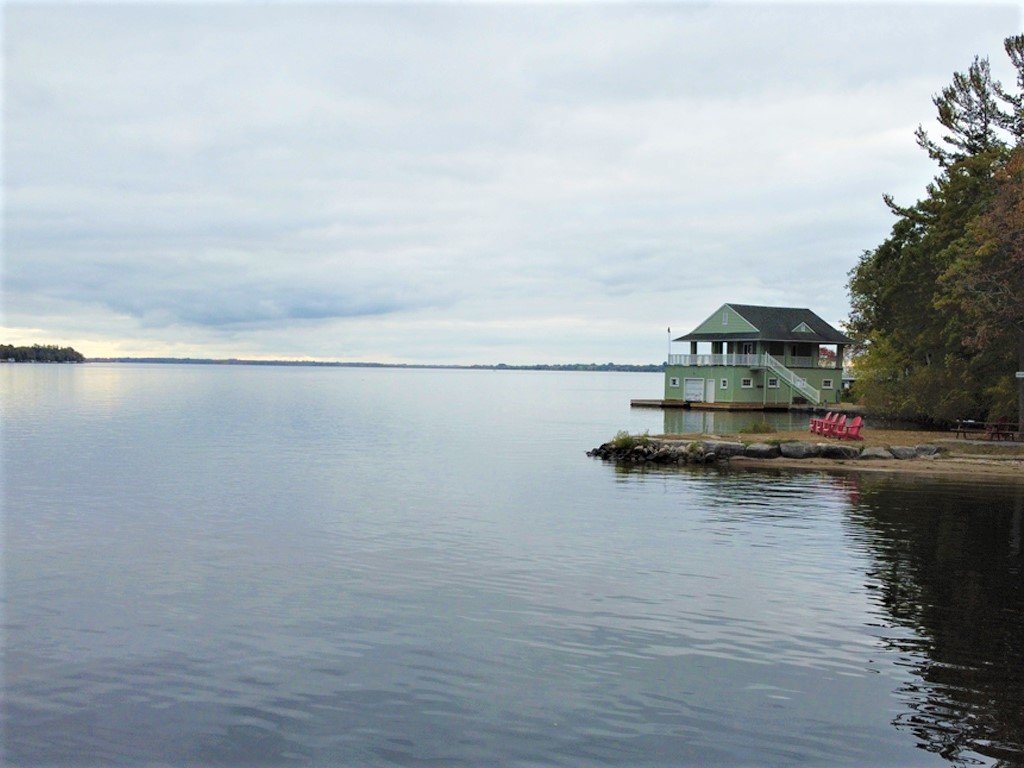The Sandbar at Sturgeon Point


Before Sturgeon Point was developed as a tourist destination and cottage community beginning in 1876, the Sandbar at Sturgeon Point was one of the most noticeable natural features on Sturgeon Lake. Sturgeon Point was an unusually pretty locale—located where the three arms of the lake converged, affording views in all directions. Sturgeon Point was made of sand and gravel, soils that were so well drained that it did not support forests that were as dense as the surrounding countryside. This “parkland” was an appealing place to stop while paddling on Sturgeon Lake—and was not well suited to agriculture. The Sandbar, projecting out into Sturgeon Lake, made a natural landing.
In 1876, steamboat operator George Crandell transformed Sturgeon Point into a summer destination. In the late nineteenth century, other than the railway (which never served Sturgeon Point) steamboats were the fastest mode of long-distance transportation. The trip from Lindsay to Sturgeon Point took between 1:20 and 2 hours depending on how many stops were being made on the way. Many people would enjoy an excursion of that distance on a steamer, but to spend any time at Sturgeon Point, a hotel was needed. Built just east of the Sandbar, with a wharf out front, Crandell’s Sturgeon Point Hotel featured a beautiful two-story verandah. In the original advertisements, its aesthetics were so exaggerated that, when the artist’s rendering was compared to a photograph, one might not realize that they were the same building. The promotions worked, and the Sturgeon Point Hotel soon became a luxurious summer resort, with the sandbar as a popular place for tourists to swim and enjoy the sights of Sturgeon Lake.
While the Sturgeon Point Hotel was operating, the Sturgeon Point Regatta was a huge event, bringing thousands of visitors from a considerable distance. As the crowds gathered to watch the races, the hotel and Sandbar were very busy locations. Crandell moved on to other ventures and sold the hotel, but it continued to be a local landmark until it burned on June 15, 1896, and was not rebuilt. An era at Sturgeon Point suddenly ended—it would no longer be a destination for mass tourism.
After the Sturgeon Point Hotel burned, the grounds were subdivided and sold for private cottage development. In the decades that followed, automobiles replaced steamships as the common mode of transportation to visit Sturgeon Point, which increasingly became a waterfront community, rather than a tourist destination. The Sandbar continued to be promoted on postcards in the early twentieth century, even after the development of the adjacent lot. (Note the colouring in the original postcard was done by an author who had presumably never seen the actual vista, including Swananoah’s Boat House, which appears in the background). Today the Sandbar is much smaller than it was at the start of the twentieth century. It remains an interesting geographic feature, to reflect on how very different the site was in the late nineteenth century when so many visitors gathered at the Sturgeon Point Hotel and the nearby Sandbar. Though it can be seen from water while rounding Sturgeon Point, it should be respected that the Sandbar is now private property.
